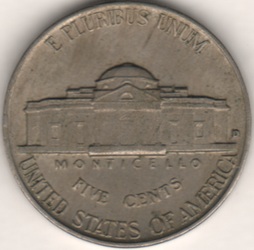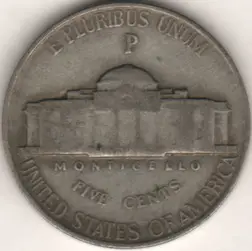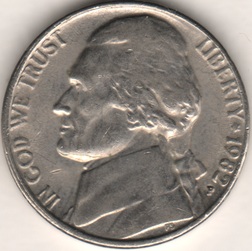The Jefferson Nickel first came into circulation in 1938. It was the first coin design ever chosen in an open competition and was created by the winner, Felix Schlag. His initials were not originally on the coin, but they were added in 1966.
The reverse shows Thomas Jefferson’s home in Monticello.
During World War II, nickel was diverted to the war effort and the coins were made of an alloy that was 56% copper, 35% silver, and 9% manganese. These nickels had a large mint mark above Monticello in order to be easy to identify. This was the first time that the mark P for Philadelphia was used. These were made from 1942 until 1945. After the war the nickel’s composition returned to 75% copper and 25% nickel, which it had been since 1866.
In all other Jefferson nickels prior to 1965, the mint mark appeared to the right of the building, with no mint mark meaning the coin was struck in Philadelphia.
From 1965 to 1967, the nickels were struck with no mint mark, even though they were produced in Denver, Philadelphia, and San Francisco.
After 1968, normal mint mark usage returned, with D for Denver, S for San Francisco, and no mint mark for Philadelphia. Starting in 1980, coins were struck with a P for Philadelphia.

1938D Jefferson Nickel

1943P Jefferson Nickel

1982P Jefferson Nickel